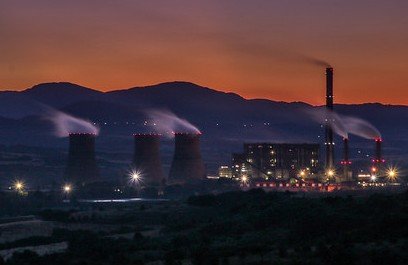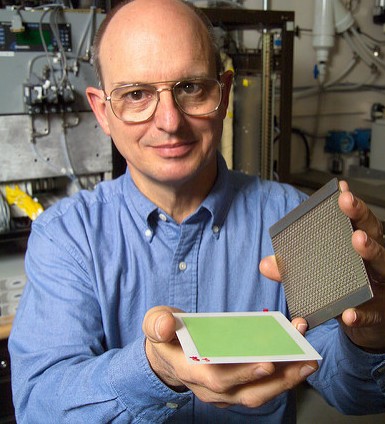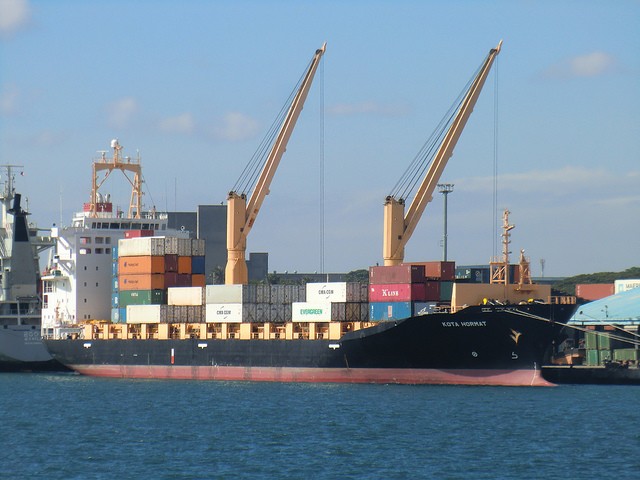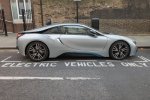Fuel Cell Technology:
Is
it all just BS or What?
You may have heard of fuel cell technology over the past few years. In the electric car world, from people I love and respect, I've heard things like: “It's a scam.” “It's bad science.” “It's just another way to keep the oil companies in business”. Or, “it's impractical, complicated, horrifically expensive, and downright dangerous.”
On the other hand, equally respected
members of the scientific community such as those working on Project
Drawdown are convinced that, while electric cars are still the
best transportation option for reducing carbon emissions, they do not
represent a large enough segment of the market yet; and all countries
would be much more likely to hit their carbon emission targets if we
develop fuel cell technology in all the ways that are currently
possible.
So, which is it?
Is fuel cell technology just an
expensive distraction that diverts research and development dollars
away from battery research that would improve electric cars and allow storage of renewable energy like solar and wind? Or are fuel cells a helpful
tool for reducing global carbon emissions?
After listening to the arguments on both sides, I'm convinced that there's a place for fuel cell technology; but at the same time, I can't deny that there are some issues that can't be ignored.
What is Fuel Cell Technology?
Dictionary.com says that a fuel cell is “a cell producing an electric current directly from a chemical reaction”.
Like batteries, fuel cells also harness
the proton (H+) to drive electrical energy; and also like batteries,
hydrogen fuel cells don't emit any pollution, and they can power
systems from tiny to mega.
The type of fuel cell technology used in a car is the PEM (proton exchange membrane) fuel cell. The PEM fuel cell uses pure hydrogen gas to generate electricity that powers the electric motor.
Are there advantages to fuel cell technology?
Yes, I think so – and particularly there are advantages to using fuel cell technology for...
- auto transportation, especially in cities;
- fleets and taxis;
- long haul trucking;
- freight shipping (today's ships run almost exclusively on high-polluting diesel fuel) and cruise ships;
- ferries; and
- energy production, by switching from combustion-based electricity production (33% efficient use of hydrocarbons) to fuel cells (65-85% efficient use of hydrocarbons).
Advantages of using fuel cell technology in transportation
Globally, transportation (along with electricity production) is responsible for a huge slice of the carbon emissions pie.
Worse – in the case of
transportation, at least – it is distributed over thousands
(millions) of individual CO2-emitting tailpipes in the form of gas
and diesel powered vehicles. With current technology is easier to
capture and sequester the carbon from ONE central location emitting
CO2, like at a power plant, than to try to vacuum up CO2 out of the
atmosphere after it leaves the tailpipe of a vehicle.
Where can fuel cells make the most
difference?
Cities: Since PEM fuel cells
operate in vehicles without emitting any pollution at the tailpipe,
increased use of fuel
cell cars in cities will make the air so much cleaner and human
friendly. Pollution
from cars and trucks is a major source of smog and soot in
concentrated traffic areas, and diesel exhaust in particular is a
health
hazard. This would be a major attraction of fuel cell cars and
battery electric cars in densely
populated Asian cities.
Fleets: The real advantage of
hydrogen fuel cells for a fleet of vehicles is that they can make use
of economy of scale for building out the hydrogen fueling
infrastructure.
In May 2018, project
ZEFER was launched in three European cities – London, Paris,
and Brussels – to prove that hydrogen fuel cell technology could
benefit fleets which primarily operate in cities where tailpipe
emissions are especially unwelcome, which drive long distances all
day every day, and that need rapid refueling: taxis, cars for private
hire, and police vehicles.
The cars used in this project, which
involves 180 vehicles in the three urban centers, are the Hyundai
ix35 Fuel Cell, the Toyota Mirai, and Honda’s Clarity Fuel Cell.
Shipping: Container ships use especially dirty diesel fuel (bunker fuel) to cross the ocean, and commercial ports can produce a half a million cars worth of pollution and carbon emissions every day when those ships are in port.
From The Guardian:
“Shipping accounts for 13% of annual sulphur oxide emissions worldwide. A few countries, including the UK, insist that ships in their national waters use more costly low-sulphur fuel. And although new global rules for shipping to cut sulphur pollution are due to come into force in 2020, the sulphur content of shipping fuel will still be 500 times more than road diesel.”
It seems reasonable to me to try and cut down on some of that diesel use by substituting hydrogen fuel cell technology wherever possible in the shipping industry.
Royal Caribbean has announced plans to integrate fuel cell technology into some of their ships' electrical systems in order to use the fuel cell in port to carry their hotel load while they are docked, in order to cut down the use of LNG.
The Maritime Hydrogen Fuel Cell Project hopes to combat the air pollution in Honolulu by replacing maritime auxiliary power, usually provided by a diesel generator, with hydrogen fuel cells.
The Maritime Hydrogen Fuel
Cell Project:
Port of Honolulu
Ferrying: The Water-Go-Round project from Golden Gate Zero Emissions Maritime, based in San Francisco, is the “first commercial fuel cell ferry in the world”, and is expected to launch in summer of 2019. What makes this vessel unique is that it isn't just using the fuel cell to provide onboard electricity, but actually uses the fuel cell for propulsion as well.
Trucking:
Just 2 percent of all the vehicles on the road are heavy duty trucks,
but they are responsible for 23
percent of all the greenhouse gas emissions out there on the
road! That's because most trucks are powered by diesel.
Battery powered
trucks like the one Tesla is
promising to release soon will be able to replace some of the
diesel-powered trucks out there, but not all.
Even with a
proposed 300 mile range, battery
powered trucks have their limits: “As the battery becomes
larger to power the vehicle, its size increase also reduces the
available payload for transporting goods, creating a “Catch-22”
situation. The more payload that needs to be hauled, the larger the
battery becomes, reducing the vehicle’s overall hauling
capability.” There's also the matter of refueling: all the time a
battery powered truck is recharging, the truck is not available for
making money, which makes its diesel-powered alternative more
attractive. A truck powered with a hydrogen fuel cell can be refueled
in about the same length of time as a diesel truck.
Kenworth Zero Emission Cargo Transport (ZECT)
To summarize:
Cars, trucks, and ships are daily emitting tons of carbon dioxide and other pollutants (sulfur and nitrogen oxides) into the atmosphere through millions of tailpipes. At the same time, climate change is progressing at an alarming rate! So...if there's a way to cut down on carbon emissions through using science to make fossil fuel use more efficient, I'm all for it. If there's a way to cut down on tailpipe emissions in cities through technology so that people and animals can breathe, I'm all for that, too.
Fuel cells seem to be just such a technology. After all, who wouldn't want (what is basically) an electric car with an extended range and quick fill-ups, while emitting nothing from the tailpipe? It just seems odd to invest a ton of money into infrastructure that is based on expansion of fossil fuel use. It feels intuitively like it takes us in the wrong direction; but this may be a case where the quickest route forward is actually back in the direction we came from.
Seriously. What could be more counter-intuitive than seeking climate change solutions with the oil and gas industry?





